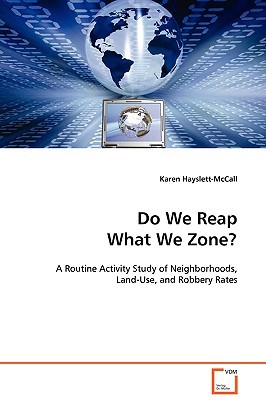
- We will send in 10–14 business days.
- Author: Karen Hayslett-McCall
- Publisher: VDM Verlag
- ISBN-10: 3639103467
- ISBN-13: 9783639103465
- Format: 15.2 x 22.9 x 0.8 cm, softcover
- Language: English
- SAVE -10% with code: EXTRA
Reviews
Description
Routine activity theory suggests that neighborhood-level activity patterns influence crime rates, and that the convergence of three elements in space and time-a motivated offender, a suitable target, and the absence of a capable guardian-result in increased likelihood of criminal events. As such, particular land-use patterns may explain why disadvantaged neighborhoods have higher crime rates than more advantaged areas. This monograph examines whether the effect of neighborhood disadvantage on crime may be a function of its association with land-use patterns. This research also examines whether land-uses have greater effects in disadvantaged neighborhoods. By understanding the effects of land-use, planners and managers could make changes in land-use patterns that decrease crime rates. Findings reveal that both social characteristics and several land-use patterns exhibited different degrees of influence within three research sites. Generally, the percent of land-use dedicated to commerce as well as some commercial institutions were significant predictors of robbery rates. However, types of commercial land and establishments varied by the study site.
EXTRA 10 % discount with code: EXTRA
The promotion ends in 18d.18:09:33
The discount code is valid when purchasing from 10 €. Discounts do not stack.
- Author: Karen Hayslett-McCall
- Publisher: VDM Verlag
- ISBN-10: 3639103467
- ISBN-13: 9783639103465
- Format: 15.2 x 22.9 x 0.8 cm, softcover
- Language: English English
Routine activity theory suggests that neighborhood-level activity patterns influence crime rates, and that the convergence of three elements in space and time-a motivated offender, a suitable target, and the absence of a capable guardian-result in increased likelihood of criminal events. As such, particular land-use patterns may explain why disadvantaged neighborhoods have higher crime rates than more advantaged areas. This monograph examines whether the effect of neighborhood disadvantage on crime may be a function of its association with land-use patterns. This research also examines whether land-uses have greater effects in disadvantaged neighborhoods. By understanding the effects of land-use, planners and managers could make changes in land-use patterns that decrease crime rates. Findings reveal that both social characteristics and several land-use patterns exhibited different degrees of influence within three research sites. Generally, the percent of land-use dedicated to commerce as well as some commercial institutions were significant predictors of robbery rates. However, types of commercial land and establishments varied by the study site.


Reviews